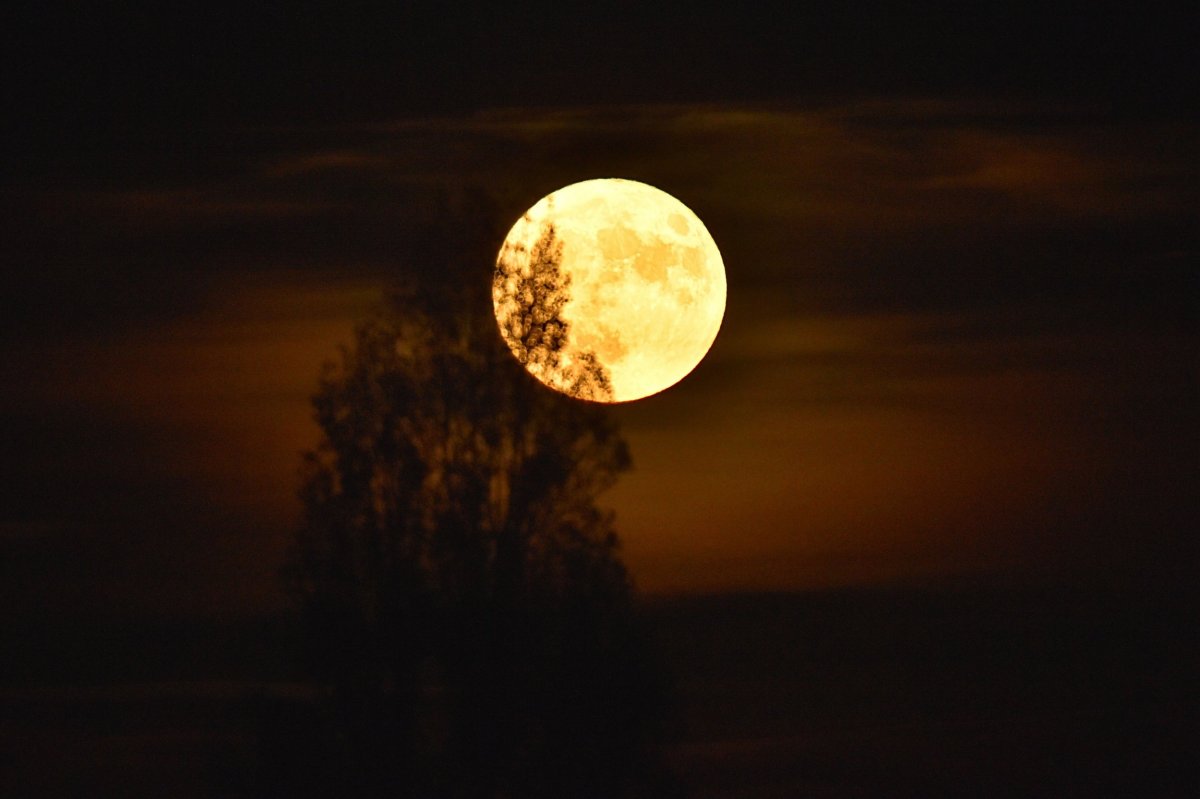Sunday evening into early Monday morning the moon will be in rare form. There are several lunar events happening all at once: a lunar eclipse, a full moon and a supermoon. The three events mean the moon will be full and appearing a little larger than usual. Additionally, when the eclipse happens, the moon will appear to glow red.
The eclipse is what causes the moon to appear reddish orange. The Earth moves between the sun and the moon blocking the sun's light from the moon, when the light gets through the Earth's atmosphere and makes it to the moon, it has a reddish color to it.
There are a few golden rules anyone hoping to see the lunar anomaly on Sunday night should follow to try and get a good view. First of all, viewers should try to get somewhere with as little light pollution as possible. Those in cities or highly populated bright areas will have a harder time seeing the moon in all its glory and the color might be thrown off a bit if there's a lot of light pollution.
No matter where viewers are in North, Central and South America they should be sure to be outside when the eclipse is set to occur if they really want to see it. A partial eclipse should be visible in Europe and in Africa. The full eclipse is set to begin at 11:41 p.m. EST, according to Time and Date. In all, the eclipse should last a little more than five hours from start to finish, though it won't be a total lunar eclipse that entire time.

Before the eclipse reaches totality it will slowly enter the shadow from the Earth. This will begin at 9:36 p.m. EST Sunday evening and will appear dark during this part of the eclipse, according to NASA. About an hour later the moon will be moving more into the Earth's shadow, sometimes it appears to have a chunk missing from it. It's not until the moon moves completely into the Earth's shadow that it begins to appear reddish.
Some planetariums will be holding events around the eclipse for those interested in seeing it from a planetarium with some professionals who can explain the phenomenon. NASA's museum alliance website has a list of museums that work with NASA, some of which will be holding eclipse viewing events.
In the Northeast and parts of the mid-Atlantic there are incredibly bitter cold conditions expected Sunday night and into Monday. Those who are planning on heading outside to see the moon should be sure to bundle up to stay warm and should be sure to head indoors if necessary. In addition to frigid conditions, there may be rainy or snowy conditions in some areas as well hindering viewing conditions.
The International Dark Sky Association is also holding an event in Utah for viewing the eclipse too. More information about that event can be found online on the associations website. The association also has an interactive map feature for those looking for ideal dark spots to view the sky from.
Uncommon Knowledge
Newsweek is committed to challenging conventional wisdom and finding connections in the search for common ground.
Newsweek is committed to challenging conventional wisdom and finding connections in the search for common ground.
About the writer
Nina was a breaking news reporter. She previously worked at Business Insider, The Boston Globe, and Boston.com.
To read how Newsweek uses AI as a newsroom tool, Click here.








